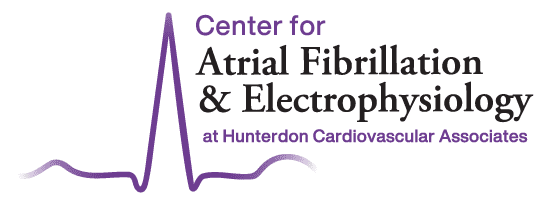An implantable cardiac defibrillator (ICD) is a device used to treat an abnormal heart rhythm or cardiac arrhythmia. It can often reduce the risk of cardiac arrest and sudden death caused by this heart condition.
Here’s more about how a defibrillator device works and how to contact The Center for Atrial Fibrillation and Electrophysiology at HCA if you need treatment for a heart condition.
What Is An Implantable Cardiac Defibrillator?
An ICD is a small, battery-powered device surgically placed under the skin on your chest. It has thin wires, or leads, attached to your heart that monitor your heart rhythm. If the ICD detects an abnormal heart rhythm it delivers one or more electrical shocks to restore a normal heartbeat. An ICD can also make your heart start beating again if it suddenly stops.
There are two types of ICDs: a traditional ICD and a subcutaneous ICD.
A traditional ICD is implanted in your chest with leads that attach directly to the heart. A subcutaneous ICD is implanted in the side of the chest below the armpit and restores a normal heart rate via an electrode that runs along the breastbone.
A defibrillator is not the same as a pacemaker, which helps your heart maintain a normal heart rate. However, many new ICDs function as both a defibrillator and pacemaker.
Heart Conditions That Can Be Treated With a Defibrillator
Arrhythmia is one of the most common heart conditions treated using a defibrillator implant.
Cardiac arrhythmias occur when the electrical signals that control the heart rhythm do not work properly.
Other heart conditions treated with an ICD include:
- Brugada Syndrome
- Certain types of congenital heart disease
- Hypertrophic cardiomyopathy
- Long QT syndrome
- Ventricular arrhythmia.
- Ventricular fibrillation
You may also receive a defibrillator in the chest if you survived cardiac arrest or have newly developed arrhythmia after a heart attack. Your doctor can talk to you in greater detail about whether you’re an ideal candidate for an ICD based on your heart condition and medical history.
Why Implantable Cardiac Defibrillators Are Used
The primary purpose of a defibrillator implant is to restore a normal heart rhythm after the defibrillator device has detected an abnormal heart rhythm.
Some abnormal heart rhythms can lead to sudden death. An ICD can often prevent this from happening.
What To Expect After Defibrillator Surgery
Full recovery after defibrillator surgery usually takes between four and eight weeks.
During this time, your doctor may advise against strenuous exercise, heavy lifting, and abrupt movements that involve lifting your arms above your head. You may also be advised to limit the time you spend driving and to avoid playing contact sports, which increases the risk of damage to the ICD and its leads.
Having an ICD will require you to visit your doctor every six months for checkups. During these routine checkups, your doctor will adjust your medications as needed to reduce irregular heart rhythms and confirm that your defibrillator is working as it should.
The battery level of your ICD will also be checked during these appointments. ICD batteries typically last between seven to ten years and can be switched out during minor outpatient surgery.
Taking Precautions With An ICD
Living with an ICD will require you to take long-term precautions when using certain magnetic and electrical devices. Mobile phones, headphones, and metal detectors are some of the many devices that may interfere with the working mechanisms of your ICD.
Here are some tips for living with an ICD:
- Keep mobile phones and headphones at least six inches away from your ICD.
- Hold mobile phones to your right ear if your ICD is implanted on the left side of your chest.
- Avoid carrying headphones or mobile phones in a chest pocket.
- Ask to have a manual search at airports, courthouses, and other places that require you to walk through a metal detector.
- Inform healthcare providers that you have an ICD, as they can interfere with MRIs and other medical equipment.
- Stay at least two feet away from power generators, high-voltage transformers, and welding equipment.
Approach your doctor with any questions or concerns you may have about your ICD. These devices can save your life and give you peace of mind if you are living with a heart condition like arrhythmia.
The physicians and staff at The Center for Atrial Fibrillation and Electrophysiology at HCA are devoted to our patients and committed to providing quality patient care on all levels. If you are experiencing symptoms of heart rhythm abnormality and want to learn more about your treatment options, please contact us at (908) 806-0180 to request an appointment.

Diagnostic Services
Echocardiogram
An echocardiogram, or echo, is a non-invasive ultrasound procedure that shows the anatomical structures of the heart.
Electrocardiogram
(ECG or EKG)
An electrocardiogram is a painless, noninvasive test performed in a doctor’s office or hospital to help diagnose an abnormal heart rhythm or other heart health problem.
Stress test
An exercise stress test is a non-invasive treadmill test that is used to assess how well the heart responds to extra demand. Medication-induced stress tests are also used.
Holter monitor
A Holter monitor is portable and continuously records the heart’s electrical activity during daily activities during a 24-hour or 48-hour period of time to identify abnormal heart rhythms.
Cardiac event monitor
A cardiac event monitor is a non-invasive, portable method for diagnosing a cardiac arrhythmia by recording a patient’s heart rate and rhythm during a period of time
Contact The Center for Atrial Fibrillation and Electrophysiology at HCA today to make an appointment to discuss your personalized diagnosis and treatment options with one of our specialists. Our team approach to AFib and other arrhythmias provides the resources you need to take control of your heart health.
